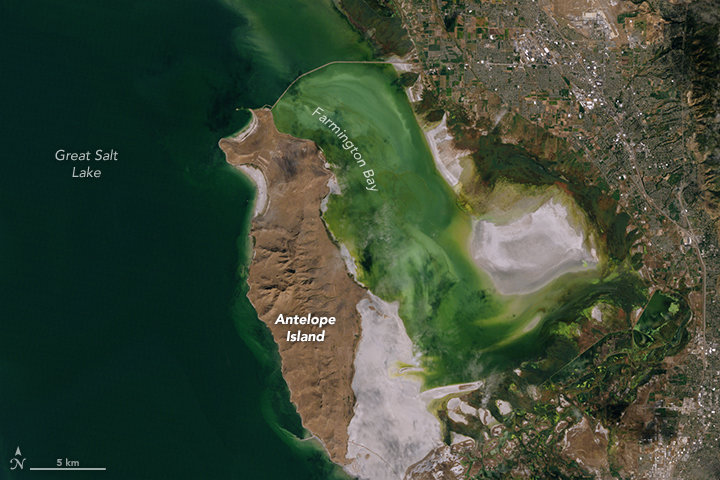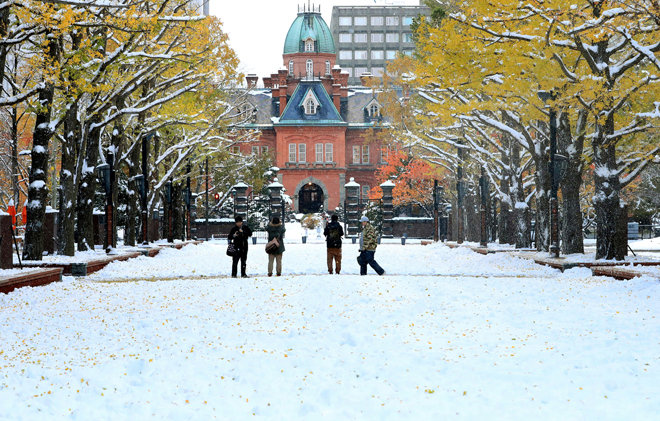
© NASA Earth Observatory/Joshua StevensAcquired September 24, 2011.
The Great Salt Lake is largest water body in the United States after the Great Lakes. It is a terminal basin, which means the water that pours into the lake from rivers and streams has no outlet other than evaporation. This allows salts and minerals to concentrate in the lake such that it is three to five times saltier than the ocean. And yet this briny lake is a haven for more than 250 species of migratory birds who feast on the brine shrimp and flies that thrive there.
But now the millions of birds and shrimp—and the people who harvest the shrimp and extract salts and recreational fun from the lake—are faced with a problem. For more than 150 years, humans have been taking more water out of the Salt Lake watershed than is flowing into it. They are now diverting about 40 percent of the river water (which would normally fill the lake) and using it for farming, industry, and human consumption. In October 2016, the Great Salt Lake reached its lowest recorded level: 1277.5 meters (4,191.2 feet), averaged between the lake's north and south arms.
Five years of drought in the American West have contributed to the recent drop in the water line, as have higher-than-normal temperatures. But the region has seen dry cycles before, and according to scientists, there has not been a significant long-term change in precipitation in the basin. Nonetheless, the volume of water in Great Salt Lake has shrunk by 48 percent and the lake level has fallen 3.4 meters (11 feet) since 1847.
These two Landsat satellite images show recent changes in the Farmington Bay basin of Great Salt Lake. The Thematic Mapper on Landsat 5 acquired the first image (above) on September 11, 2011; the second image (below) was captured by the
Operational Land Imager (OLI) on
Landsat 8 on September 20, 2016. According to scientists' estimates, more than three-quarters of the lake bed is now exposed in Farmington Bay. Salt Lake City (lower right) and its northern suburbs stretch around the east side of the lake.


Comment: See also: Animals slaughted due to record snowfall with five times the monthly normal precipitation in Yakutia, Russia
Heavy snowfall in northwestern Iran accompanied by lightning and thunder
Severe winter conditions strike eastern Turkey
Cold snap hits northern China, with some areas experiencing lowest October temperatures on record